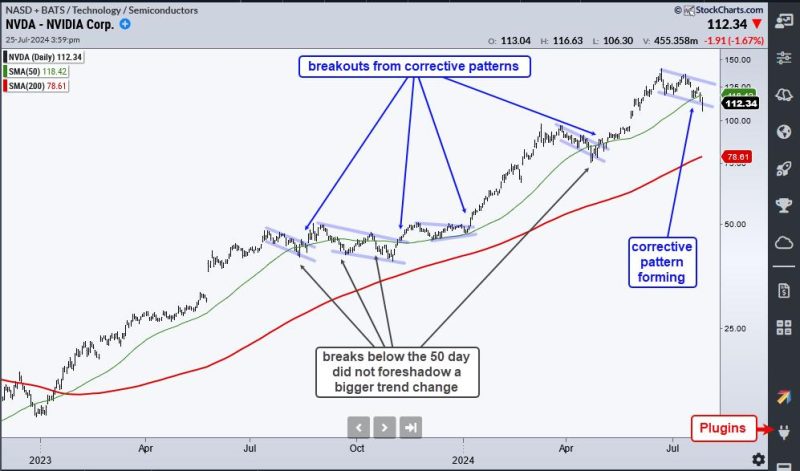NVIDIA Breaks the 50-Day SMA: Is This a Threat or an Opportunity?
The stock market is often a reflection of the complex interplay between various factors that influence investor sentiment. NVIDIA, a leading technology company renowned for its graphics processing units (GPUs), recently experienced a significant event when it broke below its 50-day Simple Moving Average (SMA). This development has sparked debates among investors and analysts about whether it signifies a looming threat or an attractive opportunity for those eyeing the stock.
The 50-day SMA is a technical indicator frequently used by traders to evaluate the overall direction of a stock’s price movement. When a stock dips below its 50-day SMA, it is typically interpreted as a bearish signal, suggesting that the stock may be entering a downtrend. In the case of NVIDIA, the breaking of this crucial support level has triggered concerns among some investors who fear that it could lead to further price declines in the near future.
However, it is essential to exercise caution when drawing conclusions based solely on technical indicators like the 50-day SMA. While these indicators can provide valuable insights into a stock’s short-term price movements, they should not be viewed in isolation. It is crucial to consider other factors, such as fundamental analysis and market trends, to gain a comprehensive understanding of the stock’s potential trajectory.
In the case of NVIDIA, despite the bearish signal sent by the break below the 50-day SMA, some analysts argue that the company’s strong fundamentals and long-term growth prospects may present a compelling investment opportunity. NVIDIA has established itself as a key player in several high-growth sectors, including artificial intelligence, gaming, and data centers. The increasing demand for its products and services, coupled with its innovative technologies, could position the company for sustained growth in the future.
Moreover, market trends and external factors can also influence a stock’s performance. For example, broader market conditions, geopolitical events, and industry developments can impact investor sentiment and drive stock price movements. Therefore, it is essential for investors to consider the broader economic landscape when evaluating the implications of technical indicators like the 50-day SMA.
In conclusion, while the breaking of NVIDIA’s 50-day SMA may raise concerns among investors, it is crucial to adopt a holistic approach to stock analysis. By considering a combination of technical indicators, fundamental analysis, market trends, and external factors, investors can make informed decisions about whether the event represents a threat or an opportunity. Ultimately, a comprehensive understanding of the stock and the broader market context is key to navigating the complexities of stock investing successfully.

